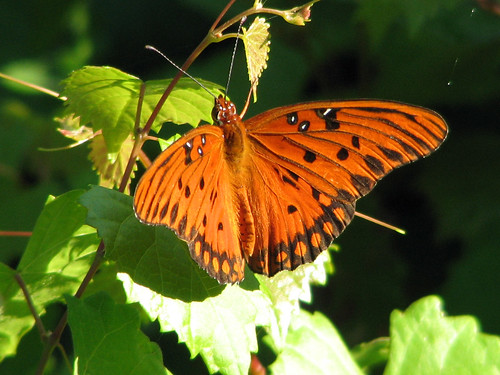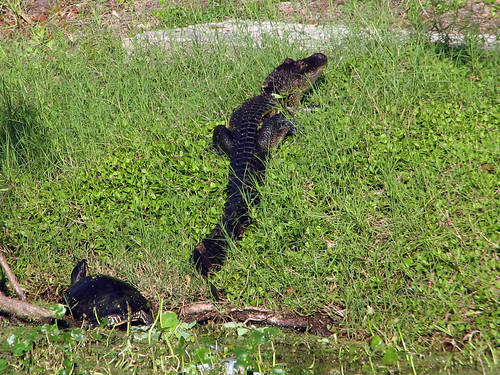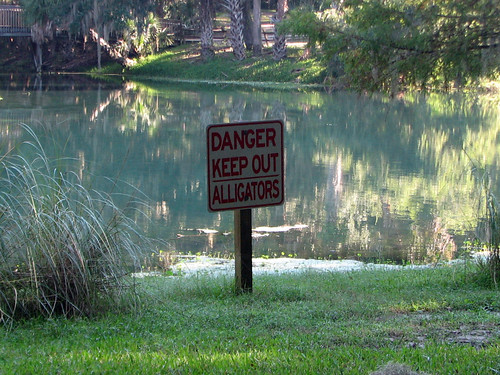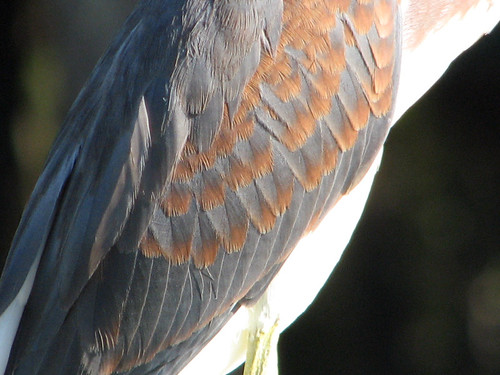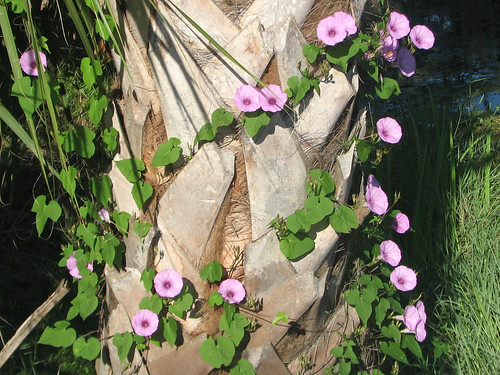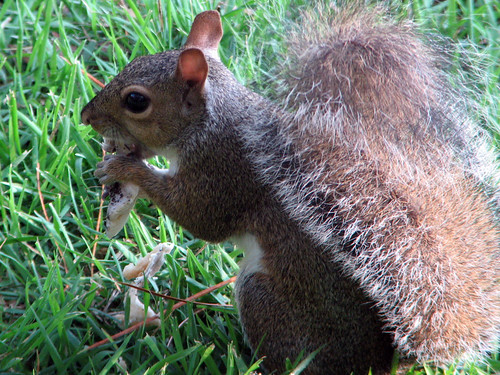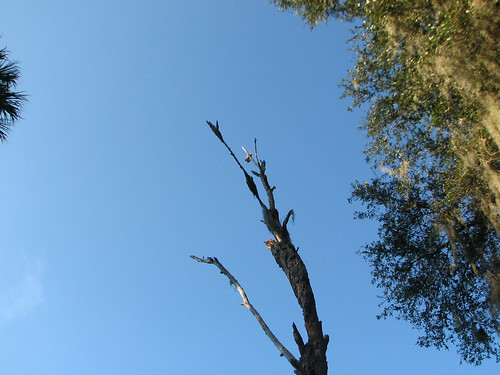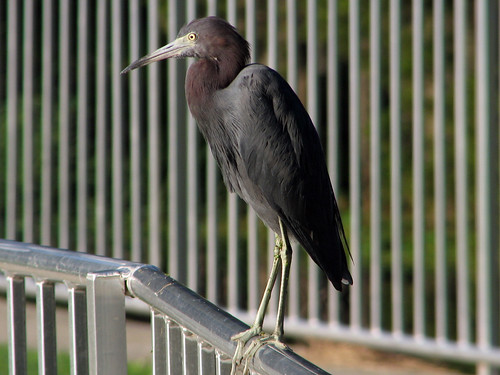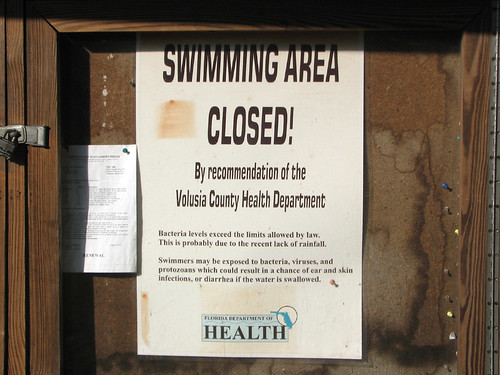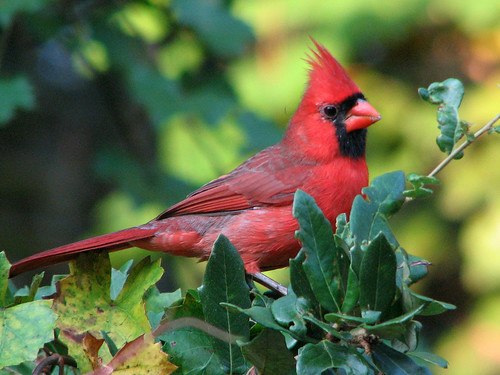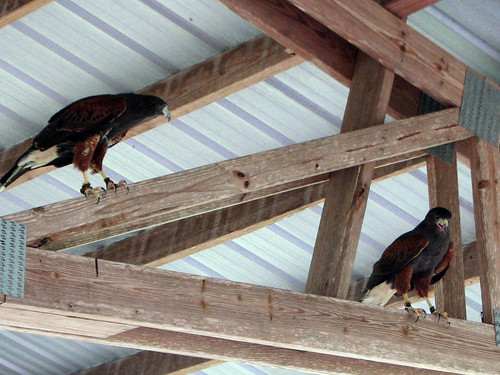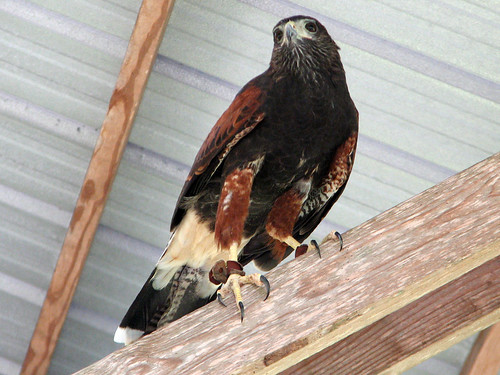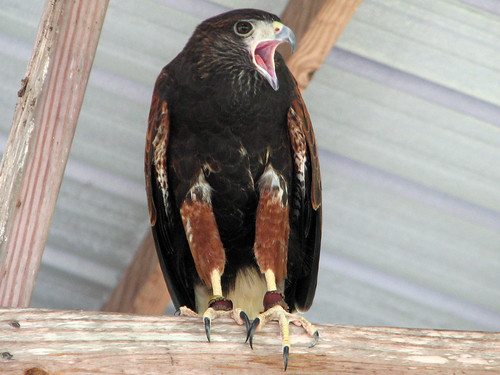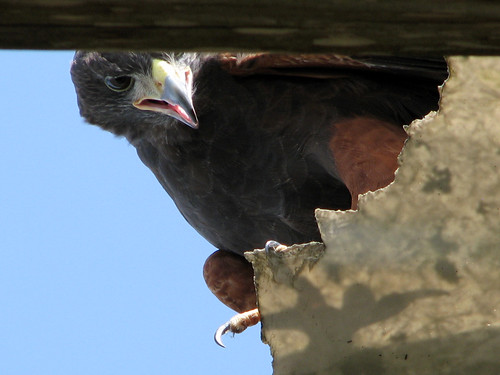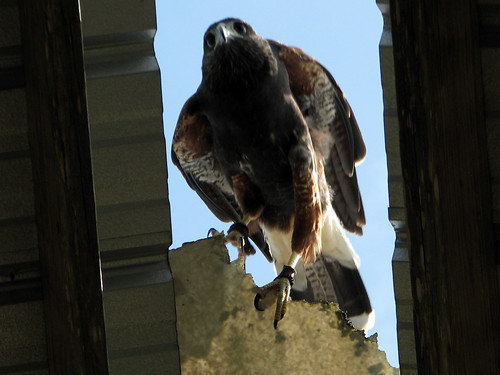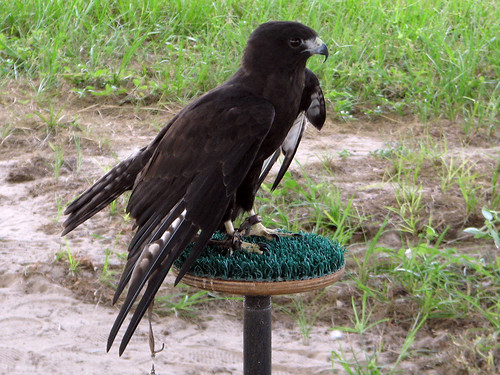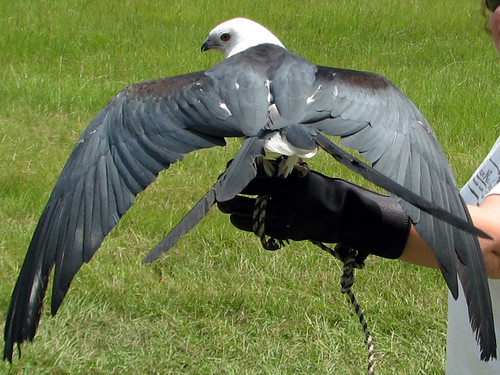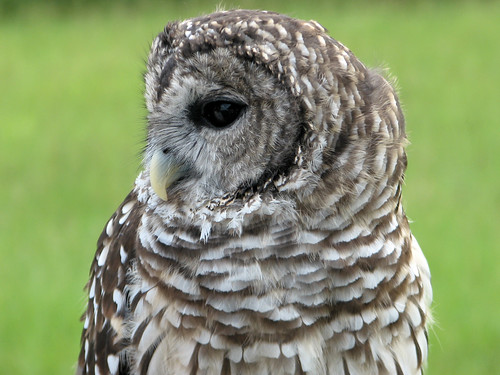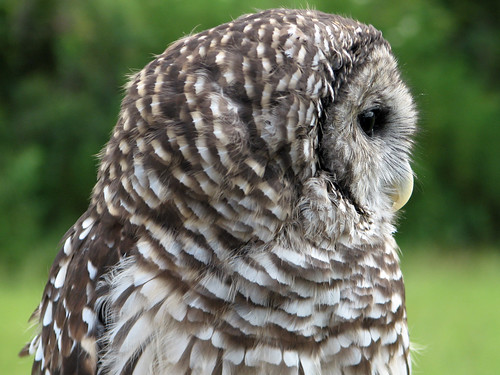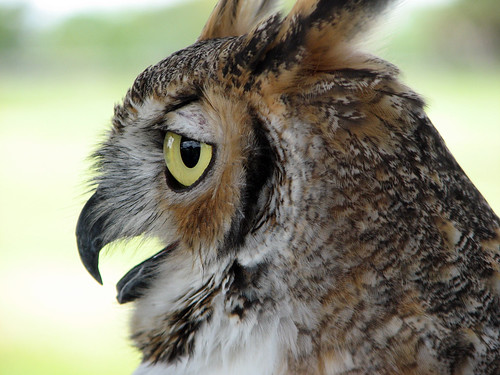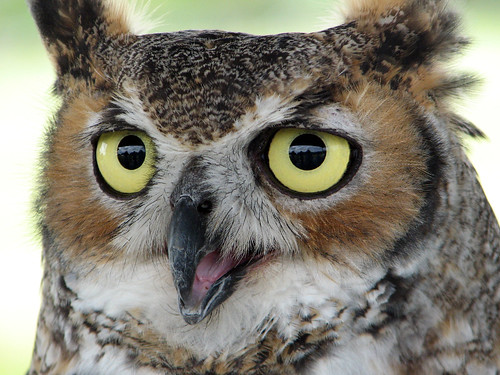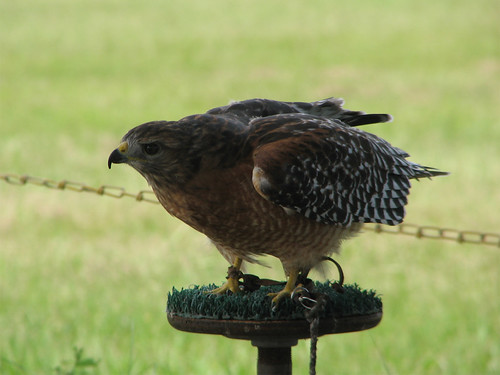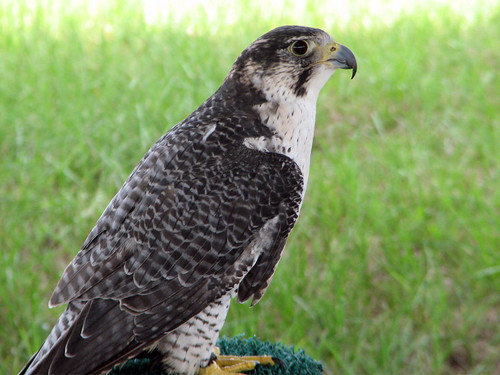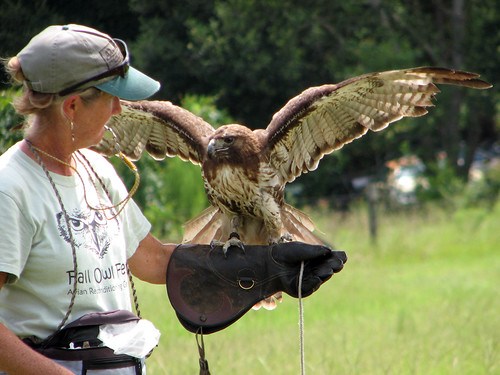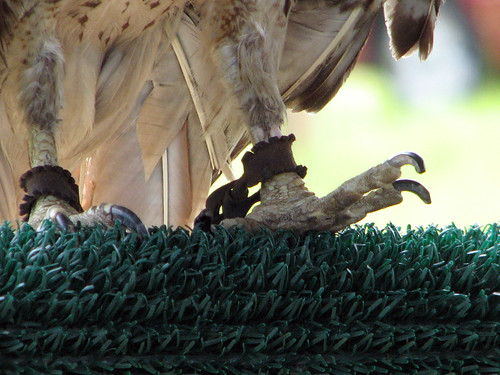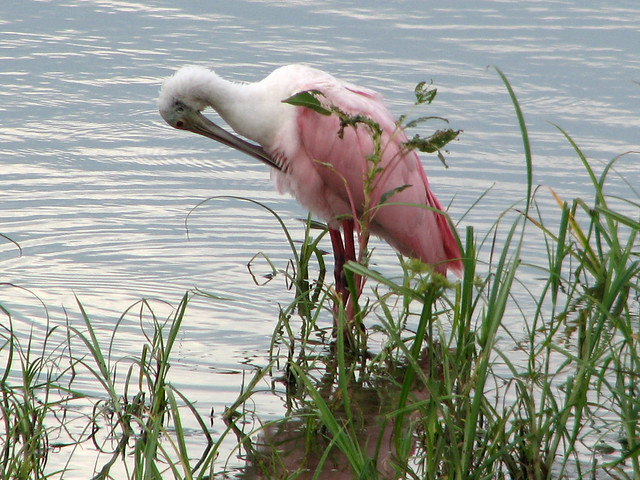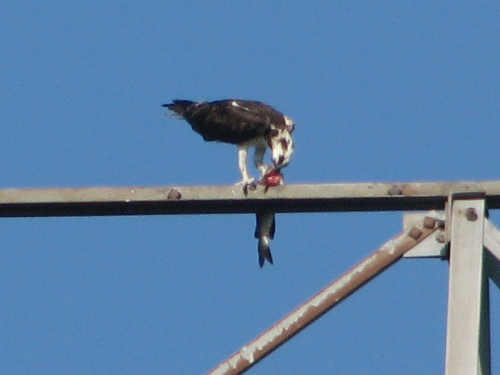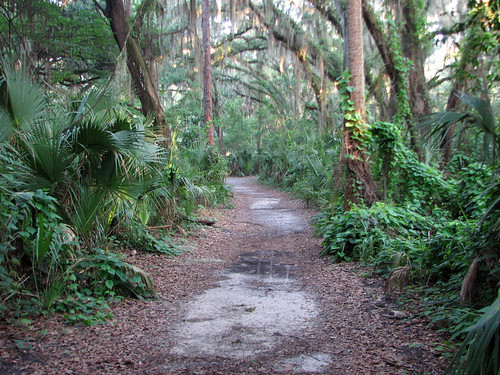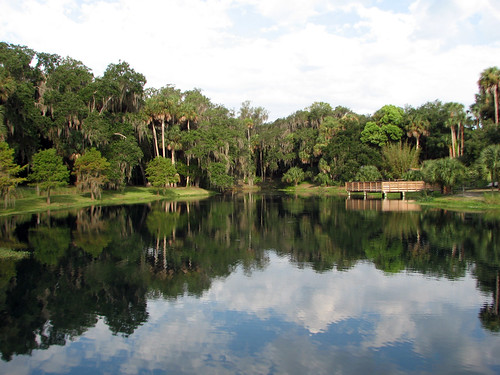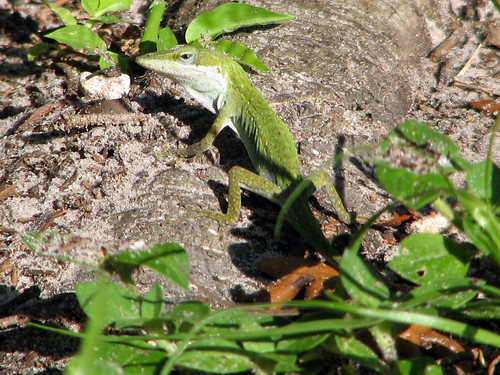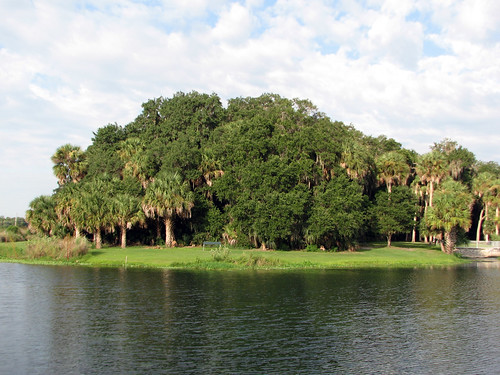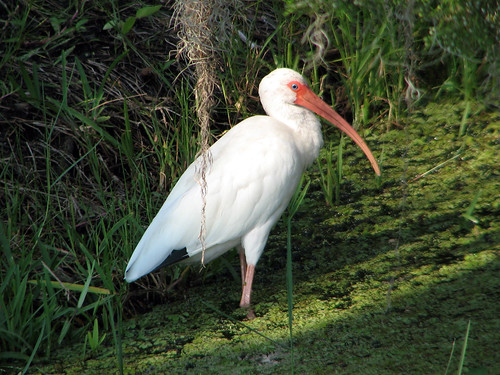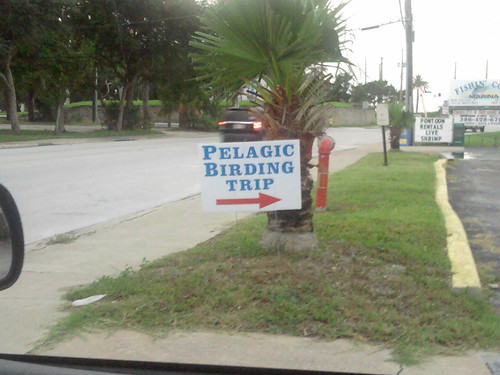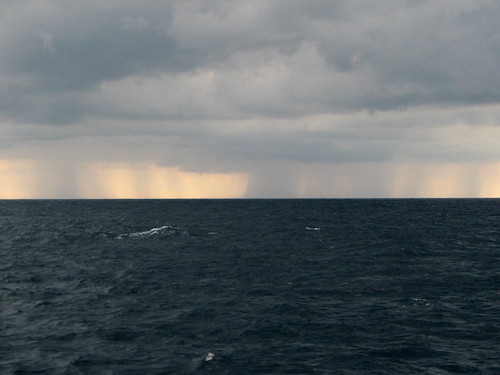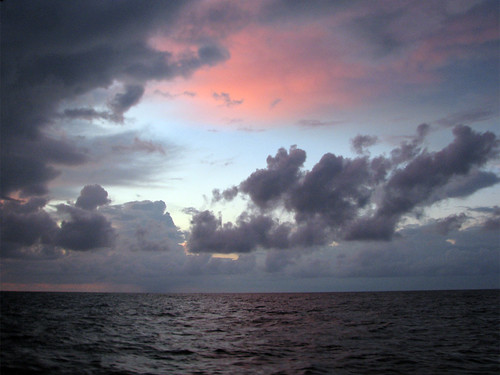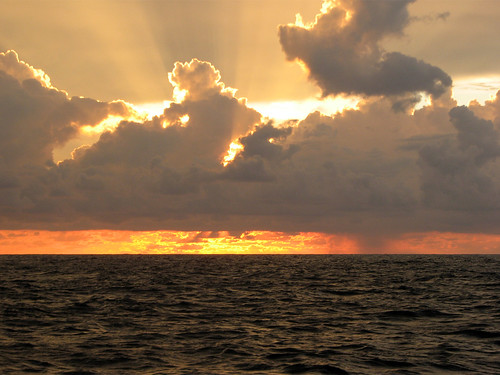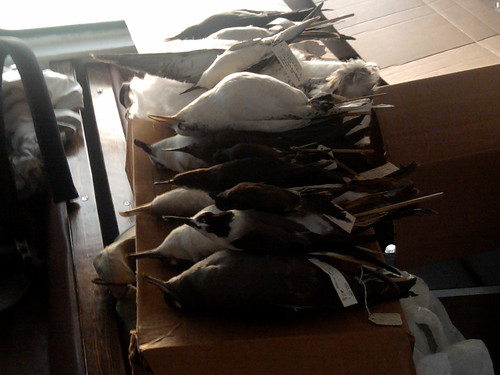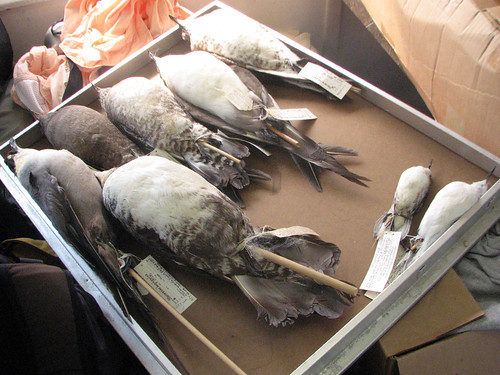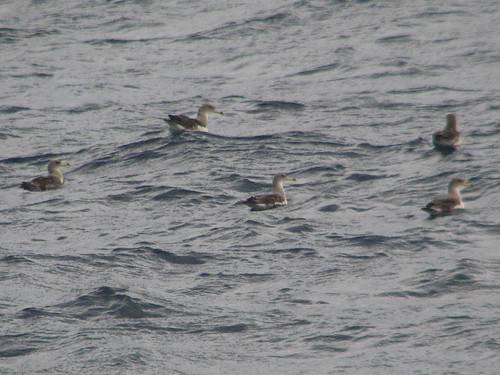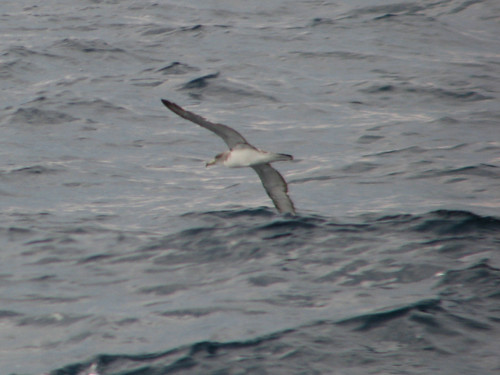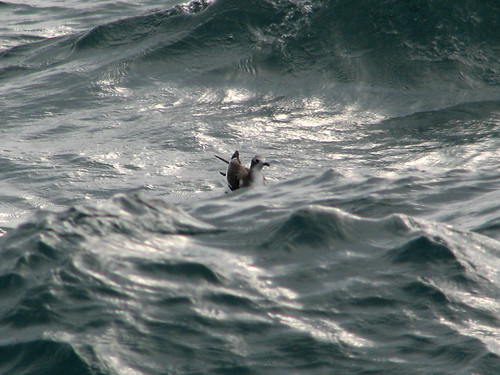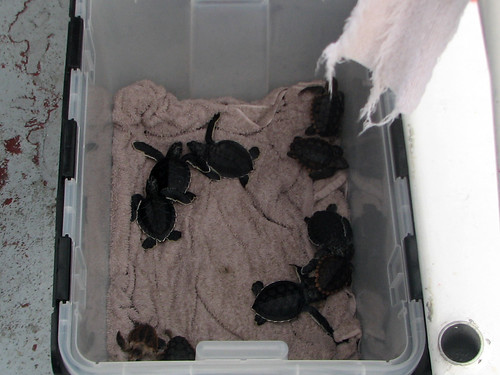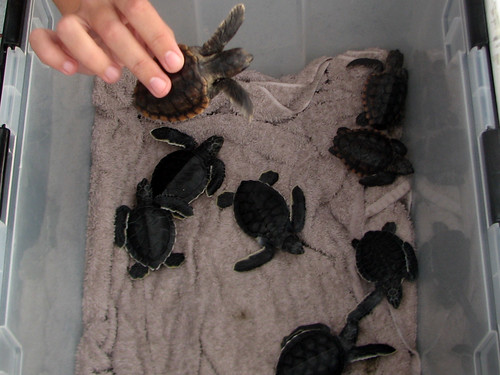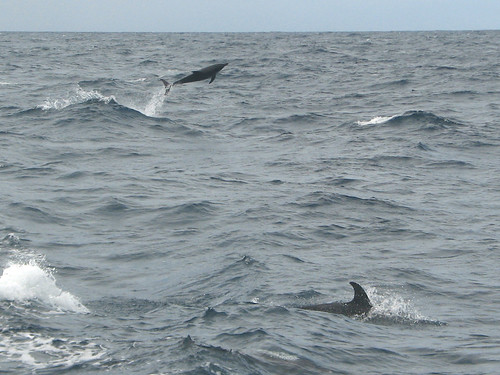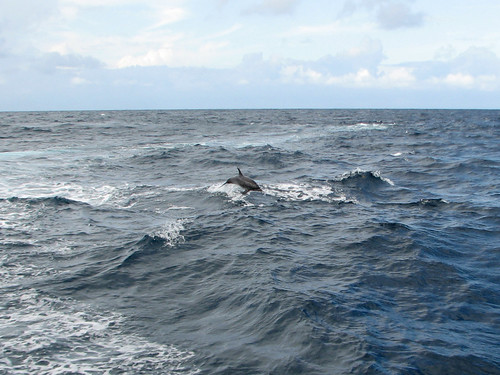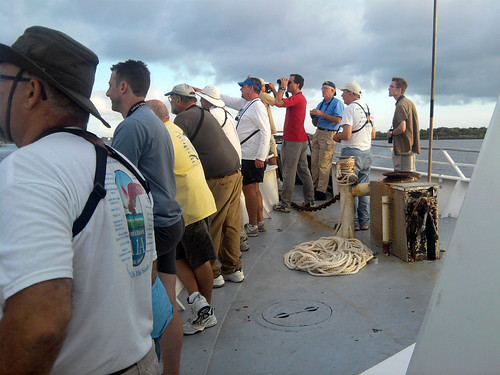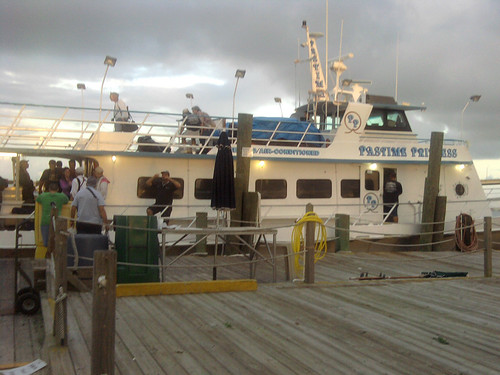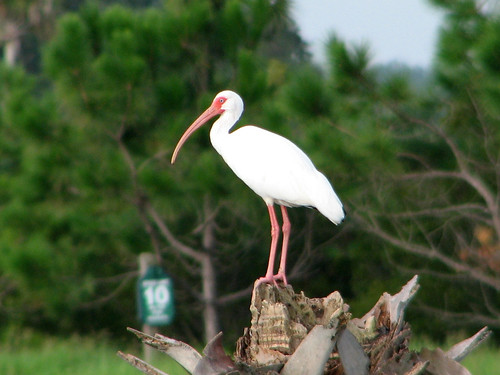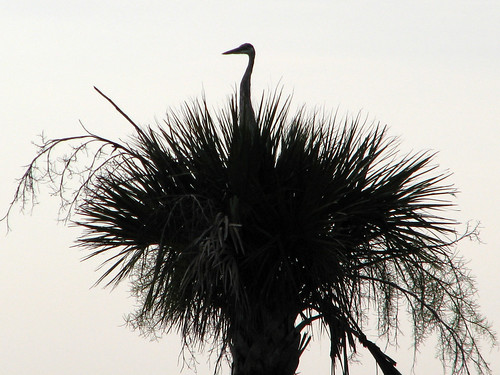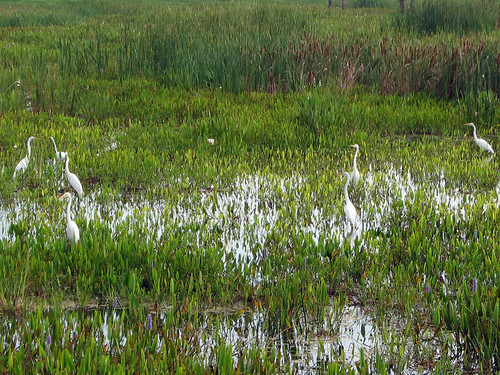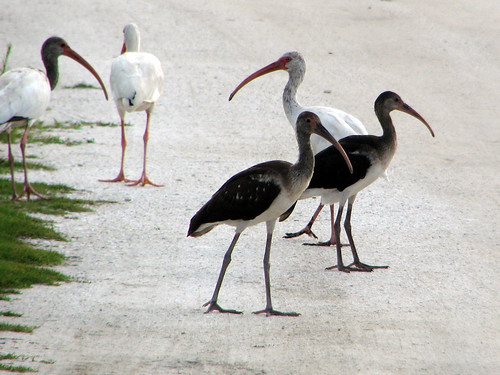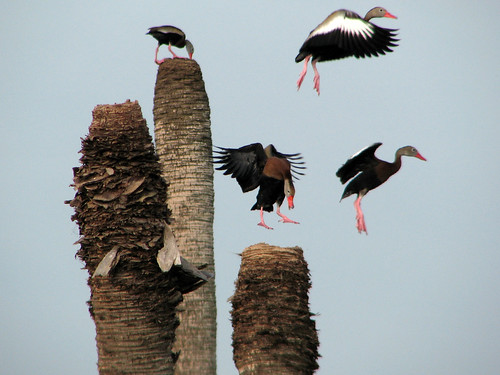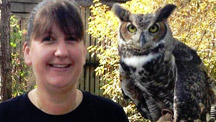Our first yard birds
Since we moved to DeBary in June, I have recorded 27 species of birds seen in and from our yard. On moving day, a Northern Mockingbird was probably the first bird to make itself known to me, though I didn’t recognize the crazy jumble of songs at first. The first bird I saw was a Swallow-tailed Kite, soaring high overhead – and I count that as the official first yard bird.
Before we put feeders up in the yard, we saw Mourning Doves, Red-bellied Woodpeckers, Northern Cardinals and Blue Jays in the vicinity of our yard. A pair of Carolina Wrens hung out by a brush pile in the back yard and would flit around our window screens, maybe looking for bugs to eat. A Brown Thrasher visited a few times, turning over leaves in another part of the back.
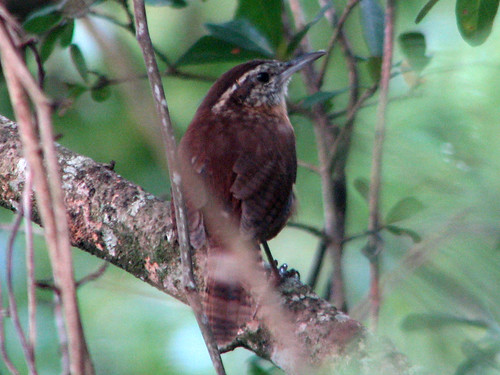
Carolina Wren looking through our window – September 5, 2011
Another early yard bird was a heard-only Sandhill Crane later in the day on moving day. We’ve seen these birds in groups of two, three or four birds in our neighborhood several times, and when we venture outside the neighborhood we see them more often than not on our way to the highway.
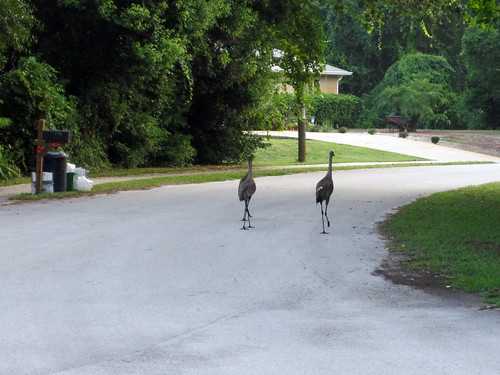
Sandhill Cranes in our neighborhood – August 12, 2011
White Ibis roam our neighborhood, usually in small gangs. We were delighted when a lone bird came into our front yard on August 9th. Although it didn’t seem to find anything to eat in our grass, we watched as it picked off several frogs in the neighbor’s front lawn across the street.
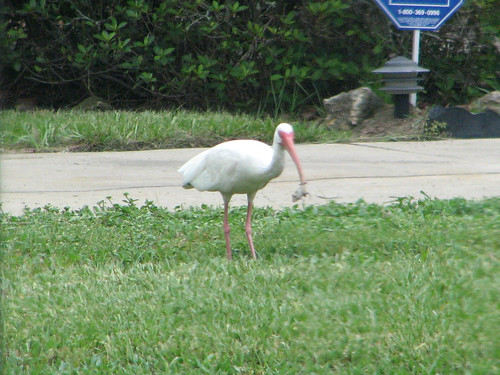
White Ibis with frog – August 9, 2011
After we put up the first feeders, regular visitors like Tufted Titmice and Carolina Chickadees began coming to our yard to feed, along with the doves and cardinals. Of course we were extremely excited to have Tufted Titmice in our own yard – they were so rare up in Lake County, Illinois! Now they are very regular and I only squeal with delight every 5th time I see them or so.
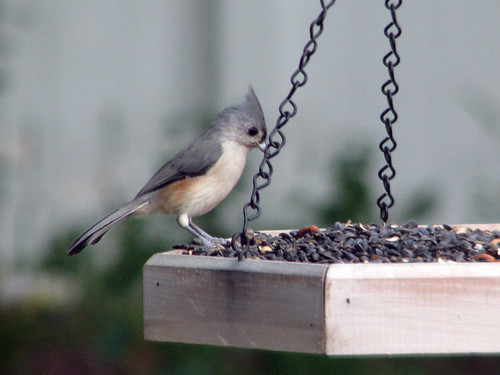
Tufted Titmouse at the feeder – September 16, 2011
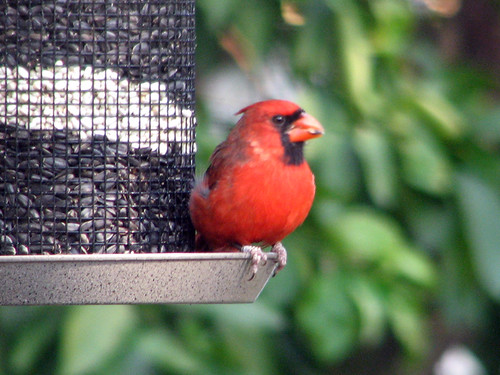
Northern Cardinal at the feeder – September 17, 2011
Although we offer nuts, the neighborhood Blue Jays seem to be quite skittish. We hear them a lot, but we rarely see them come in to eat. American and Fish Crows also stop by sometimes, but they hang out in the brushy part of the back yard and ignore the seed on offer. We haven’t had Downy Woodpeckers or Red-bellied Woodpeckers go for our nuts yet either, though they are also visiting our yard regularly.
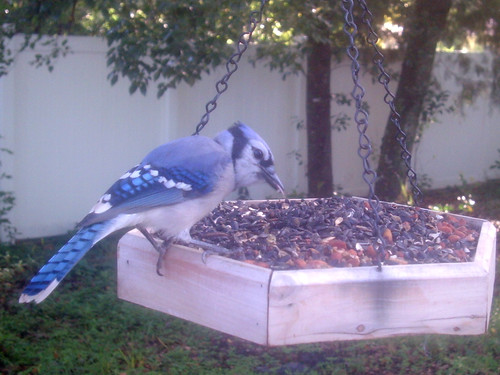
A Blue Jay caught at the feeder by the BirdCam – September 21, 2011
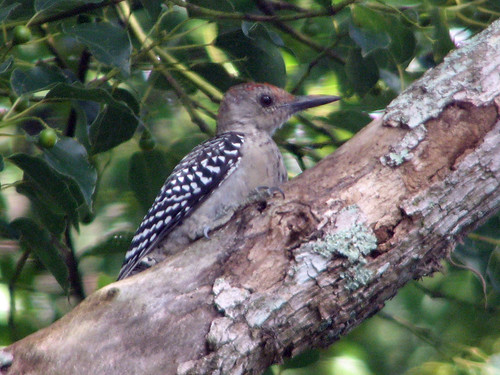
Juvenile Red-bellied Woodpecker – September 19, 2011
A couple of times we’ve seen a Red-shouldered Hawk perched on a horizontal snag by our office windows in the back yard. We rarely saw these birds up in northern Illinois so it’s quite a treat to have the chance to see one up close in our own yard. I just know there are Barred Owls all around us here in DeBary (eBird even places them in our neighborhood!), but we’ve only heard a pair of them in another part of town so far. I will probably pass out if/when we ever see one in our yard.

Red-shouldered Hawk – August 4, 2011
We rarely see any birds using the bath, which I find very strange. I expected the bird bath to be a huge draw in this hot climate, but I’ve only seen the squirrels drink from it and the occasional Mourning Dove.
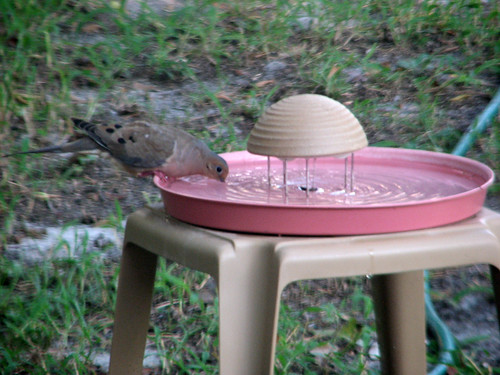
Mourning Dove – September 11, 2011
We had a Water Wiggler in the bath at first, but later I purchased a mister, thinking surely that would be irresistible to our feathered friends. So far, not so much, though I have spotted Northern Cardinals, Northern Mockingbirds, and Carolina Chickadees drinking from the drips left on the tomato stand I’m using to hold up the mister. Maybe once our regular birds are joined by more overwintering friends, the bath will see more action?
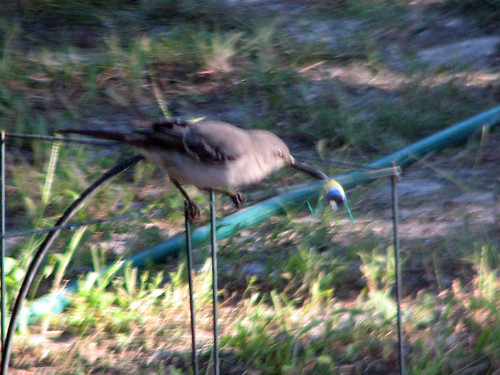
Northern Mockingbird sipping drips – October 3, 2011
One day about six weeks after we moved in, Arthur spotted a hummingbird hovering by a flower outside his window.

Our first Ruby-throated Hummingbird – July 31, 2011
The next day we hung up a couple of feeders but didn’t see any more hummingbirds. We took the feeders in, intending to clean them and put them out again, but somehow a week or so passed and we hadn’t replaced the feeders. Then Arthur spotted a Ruby-throated Hummingbird perched in a tree in our yard. Immediately the feeders went out again and we started seeing a single bird visiting each evening between about 5 and 5:30pm. After about a week we noticed a pair of hummers sparring over one of the feeders in the back. We added a second sugar water feeder to the back yard and now we are seeing a hummingbird almost every time we look outside for more than 20 minutes at a time.
Today we added Palm Warbler to our yard list. I suspect this bird was hunting and chowing down on caterpillars in our yard for over two hours! According to eBird, Palm Warblers arrive in our area in mid-September and stay through late April. I wonder if this is a recent arrival who may stick around our apparently caterpillar-infested yard? 🙂
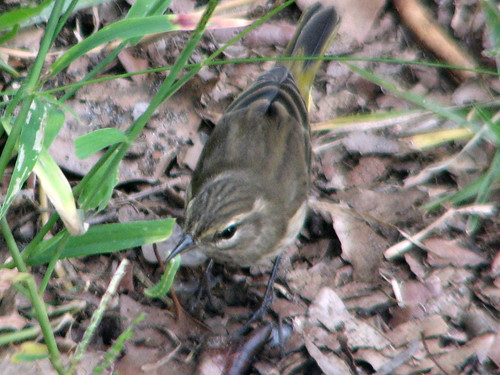
Palm Warbler with one of a hundred caterpillars – October 5, 2011
By the way, I know my pictures are normally nothing to write home about, but a lot of the pictures in this post are real stinkers, aren’t they? The house we’re renting has old windows which are just fine to look through with the naked eye, but through optics there is some major distortion going on. My poor WingScapes BirdCam has been acting up, too – it seems to be as uncomfortable in the heat as I am. Hopefully the pictures I included give you an idea of what we’re seeing in our yard, anyway. 🙂
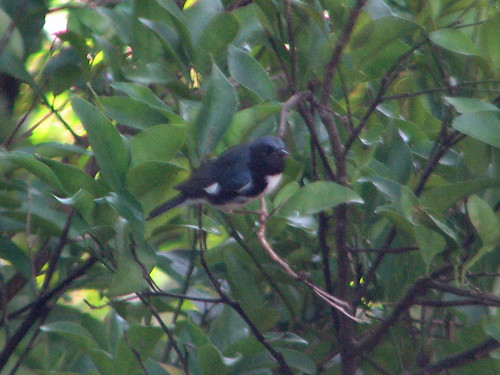
My favorite yard bird so far, a male Black-throated Blue Warbler – September 24, 2011
Here’s our list so far:
1 Swallow-tailed Kite – Elanoides forficatus
2 Sandhill Crane – Grus canadensis
3 Northern Mockingbird – Mimus polyglottos
4 Northern Cardinal – Cardinalis cardinalis
5 Mourning Dove – Zenaida macroura
6 Downy Woodpecker – Picoides pubescens
7 White Ibis – Eudocimus albus
8 Great Crested Flycatcher – Myiarchus crinitus
9 Carolina Wren – Thryothorus ludovicianus
10 Carolina Chickadee – Poecile carolinensis
11 Brown Thrasher – Toxostoma rufum
12 Red-bellied Woodpecker – Melanerpes carolinus
13 Tufted Titmouse – Baeolophus bicolor
14 Black Vulture – Coragyps atratus
15 Yellow-throated Warbler – Setophaga dominica
16 Blue Jay – Cyanocitta cristata
17 Turkey Vulture – Cathartes aura
18 American Crow – Corvus brachyrhynchos
19 Ruby-throated Hummingbird – Archilochus colubris
20 American Redstart – Setophaga ruticilla
21 Red-shouldered Hawk – Buteo lineatus
22 Red-eyed Vireo – Vireo olivaceus
23 White-eyed Vireo – Vireo griseus
24 Black-throated Blue Warbler – Setophaga caerulescens
25 Bald Eagle – Haliaeetus leucocephalus
26 Palm Warbler – Setophaga palmarum
27 Indigo Bunting – Passerina cyanea




